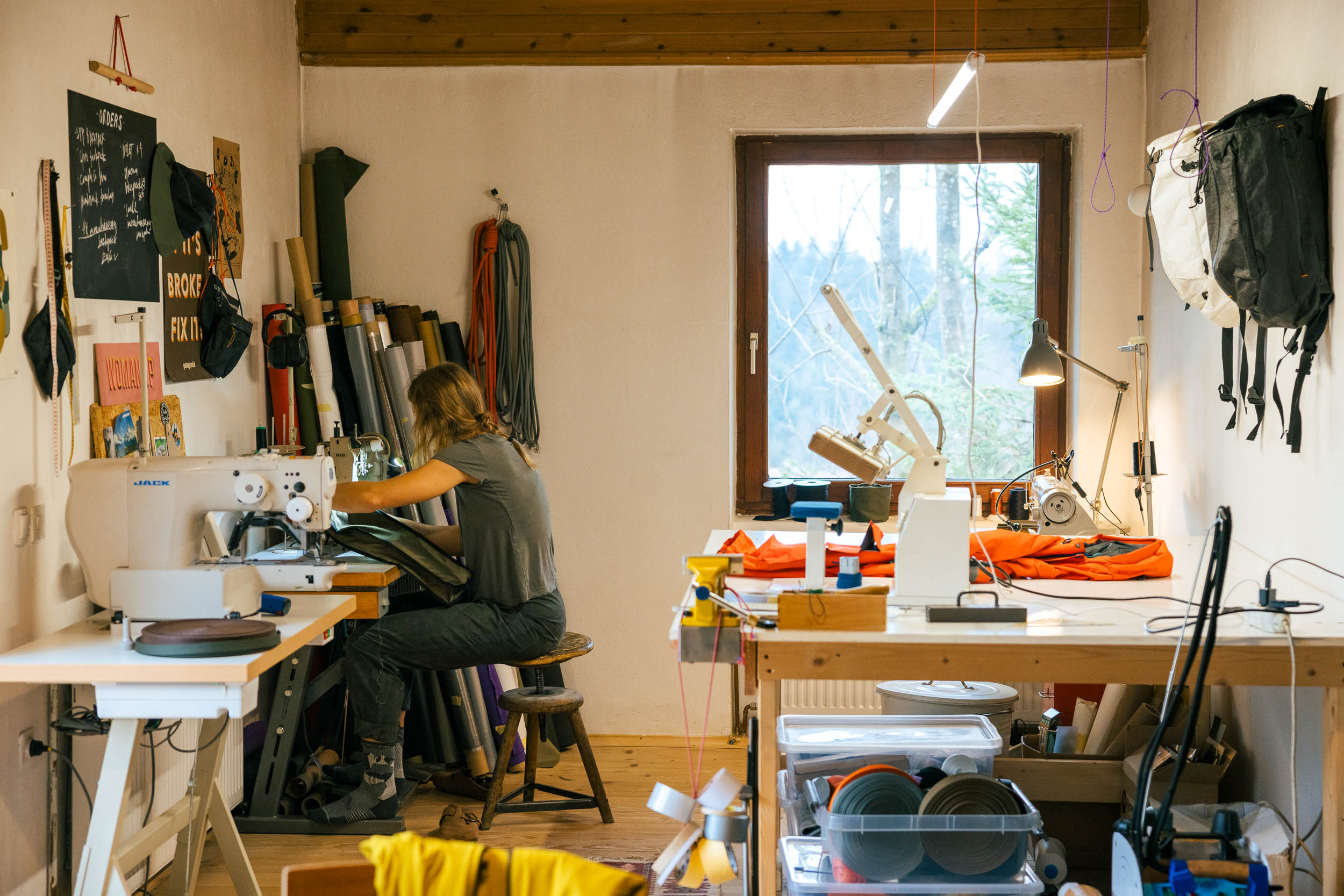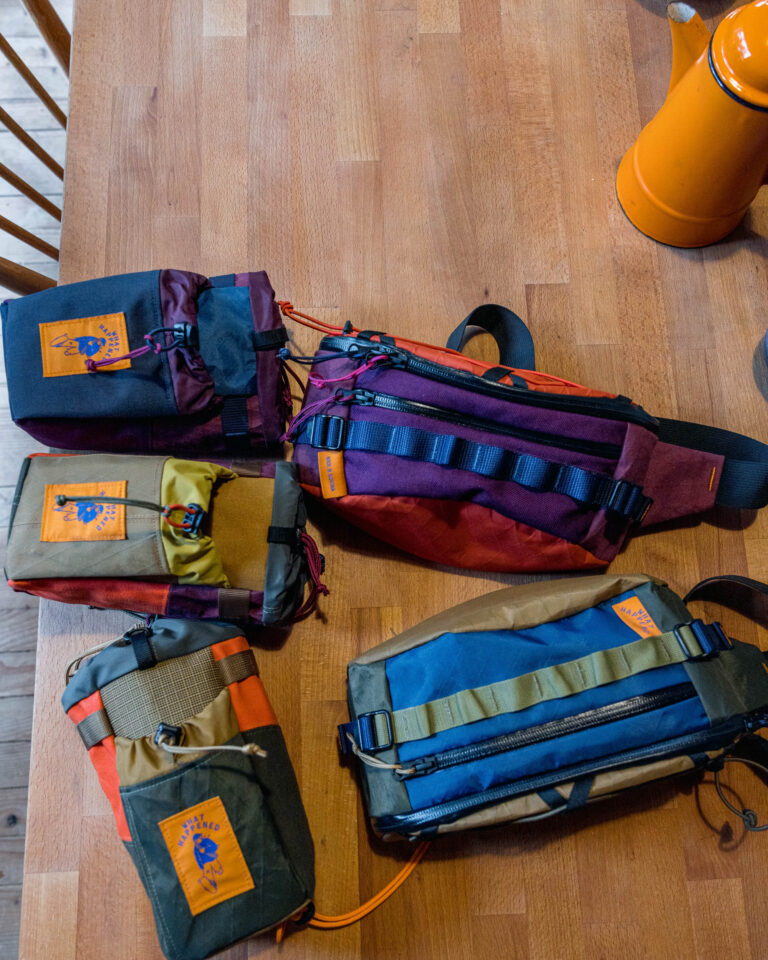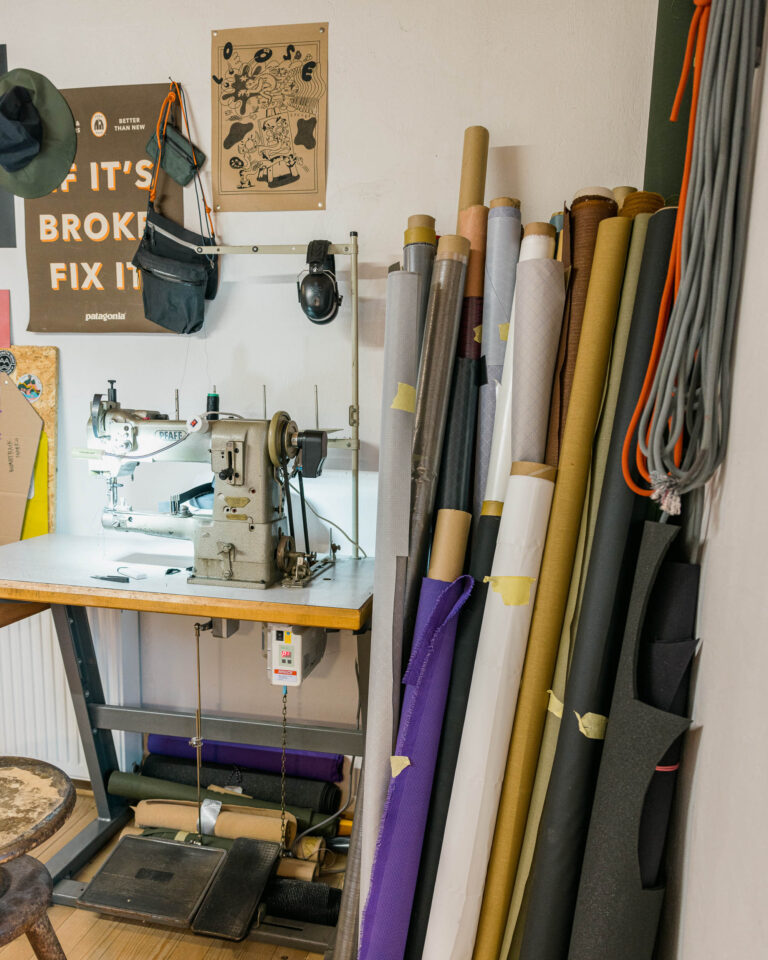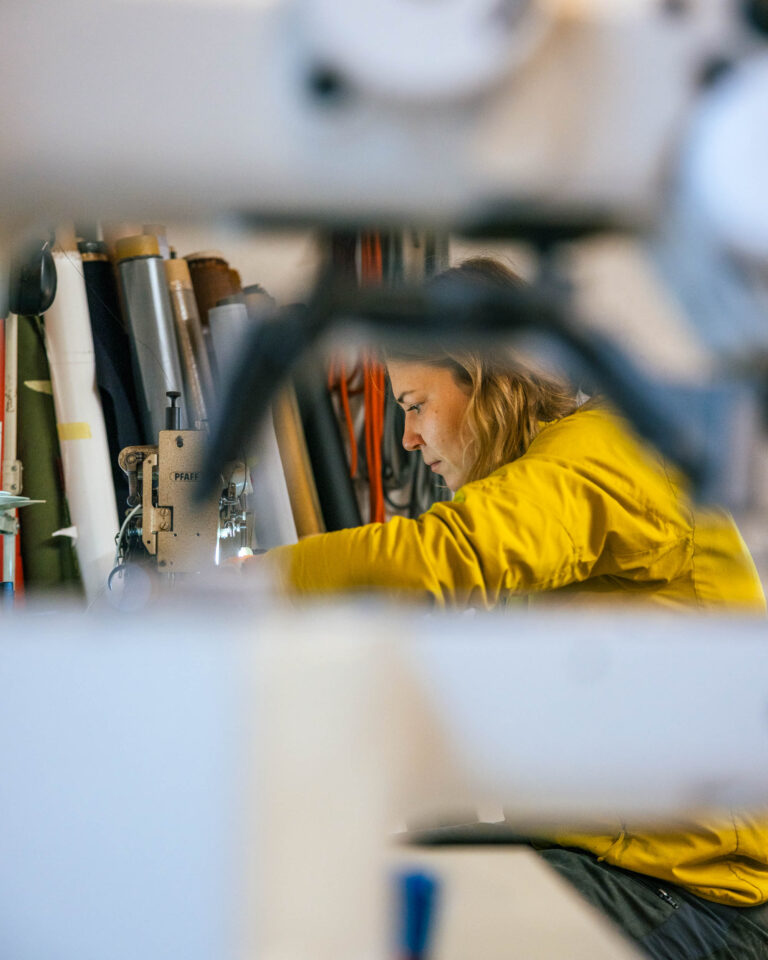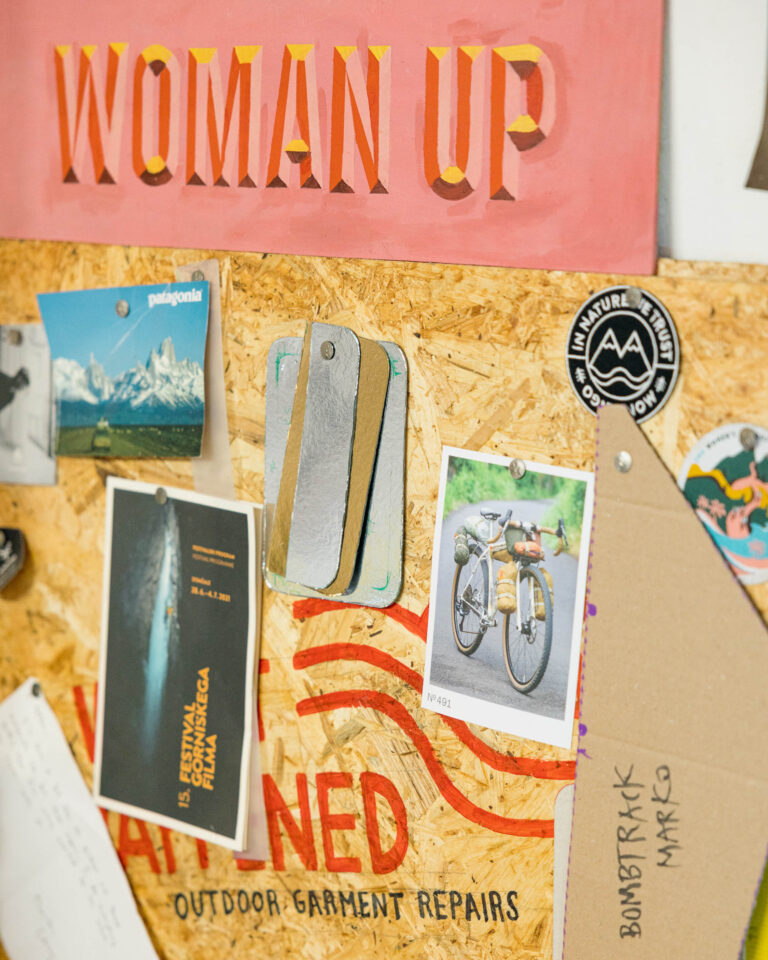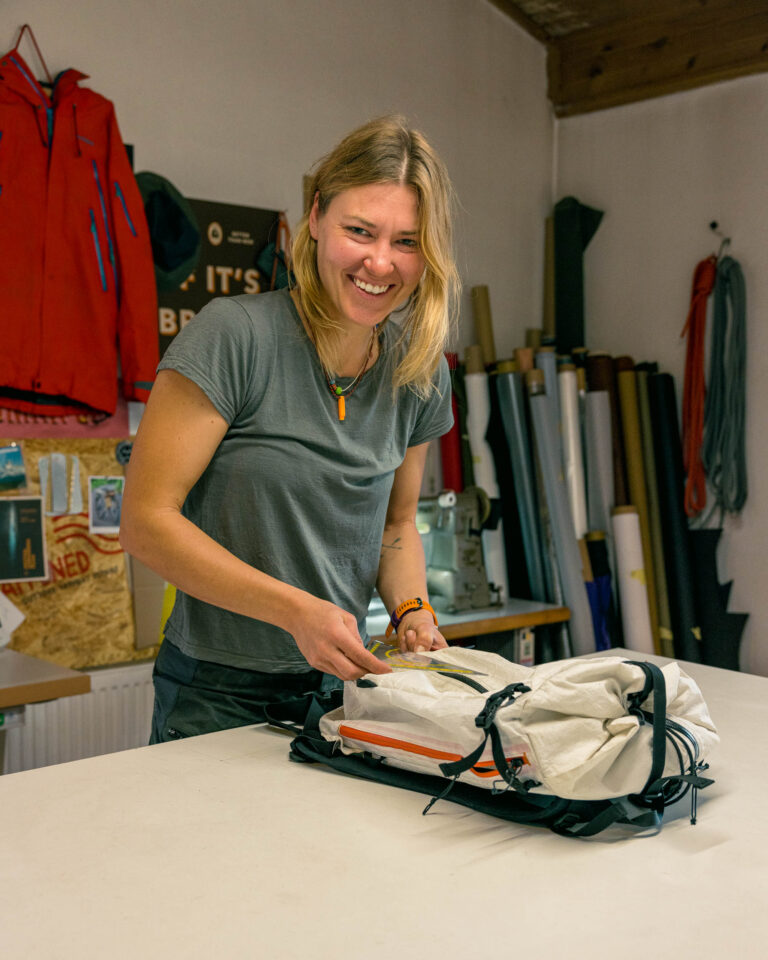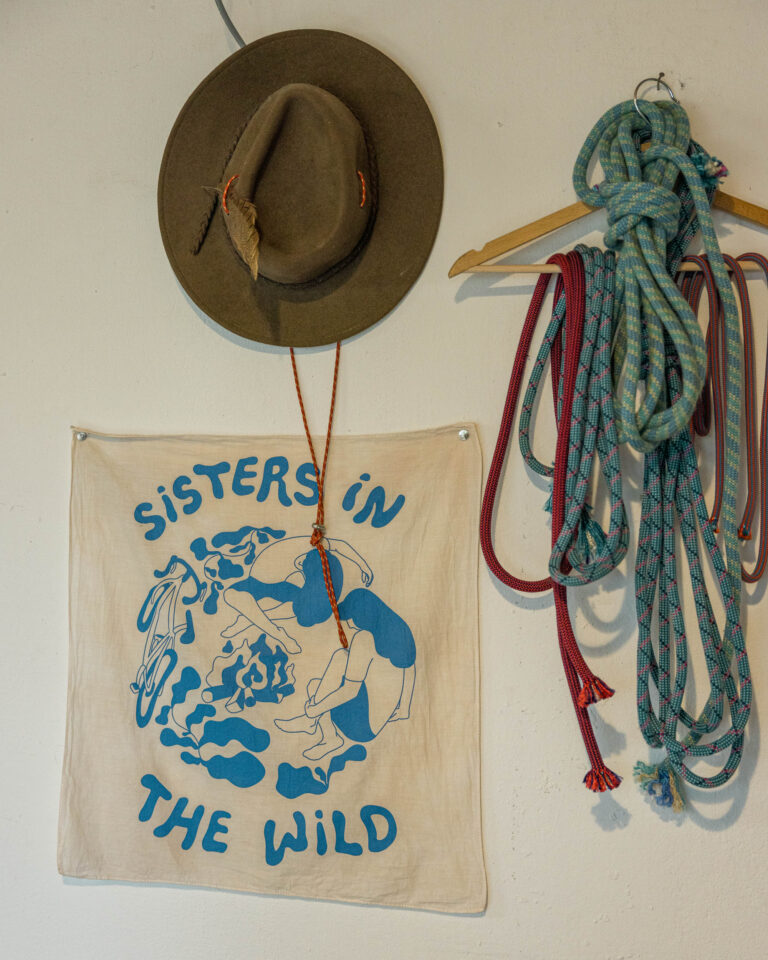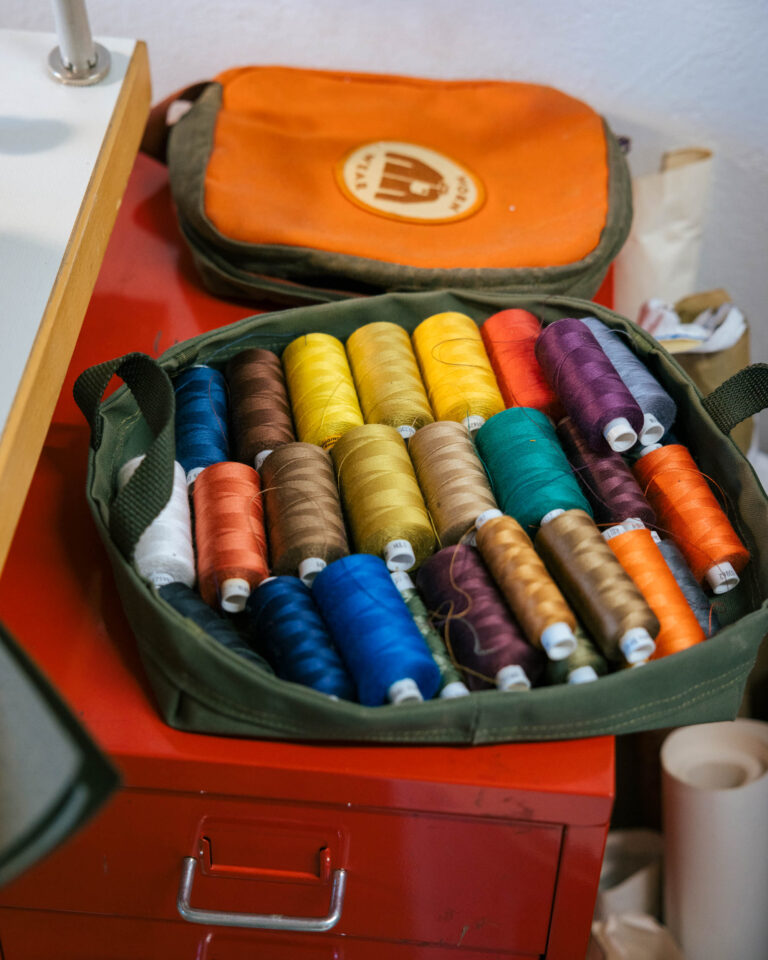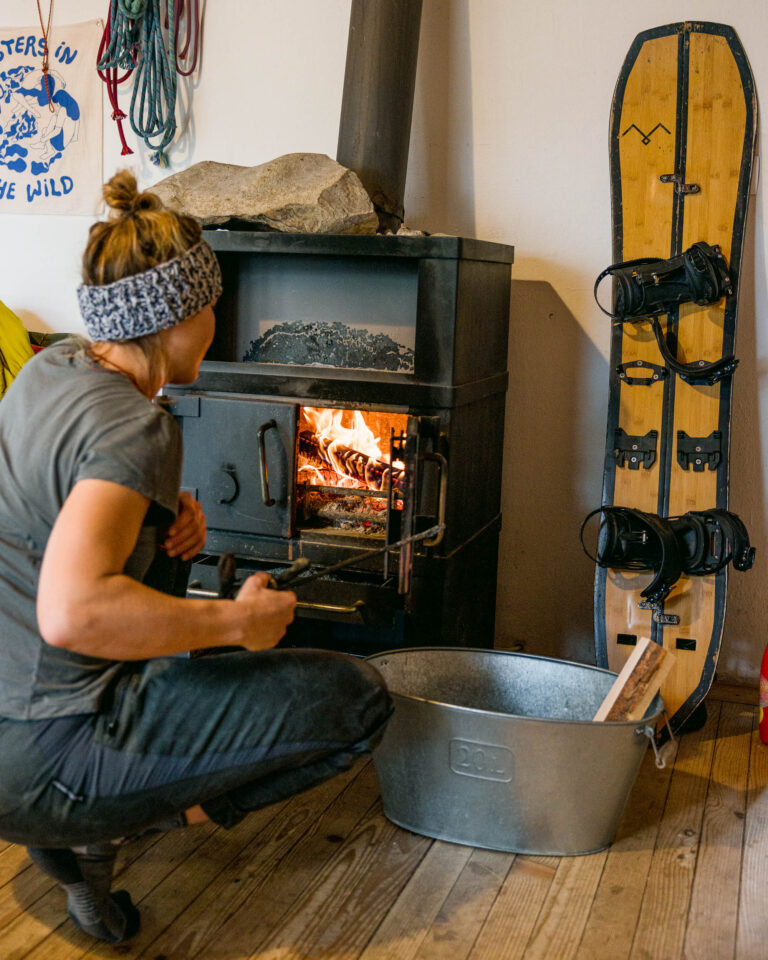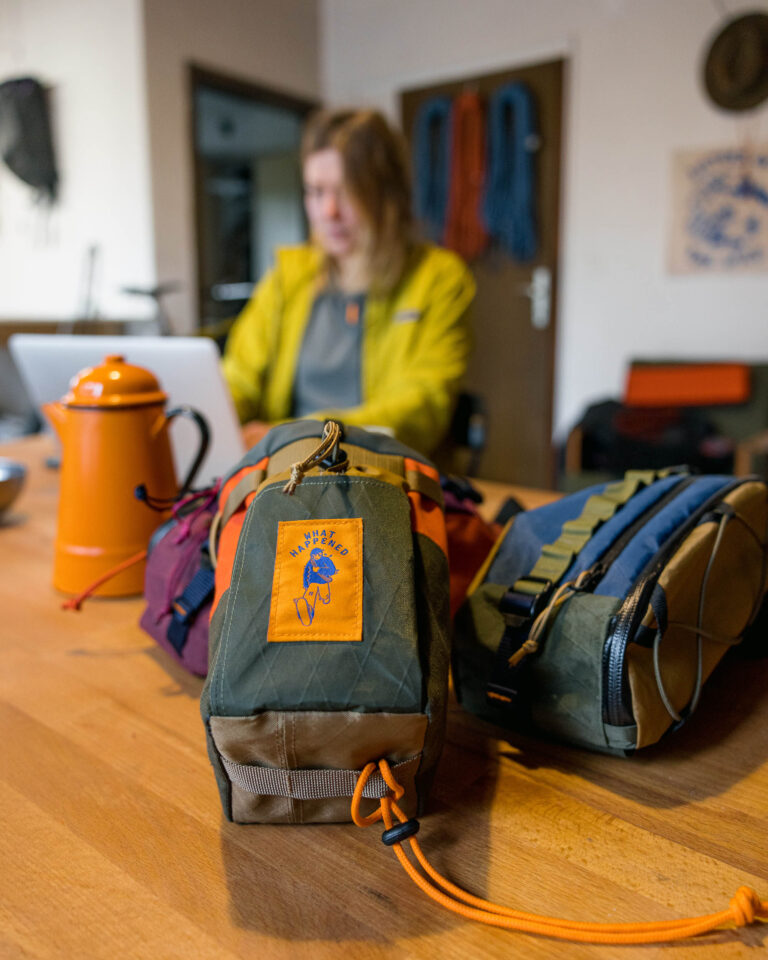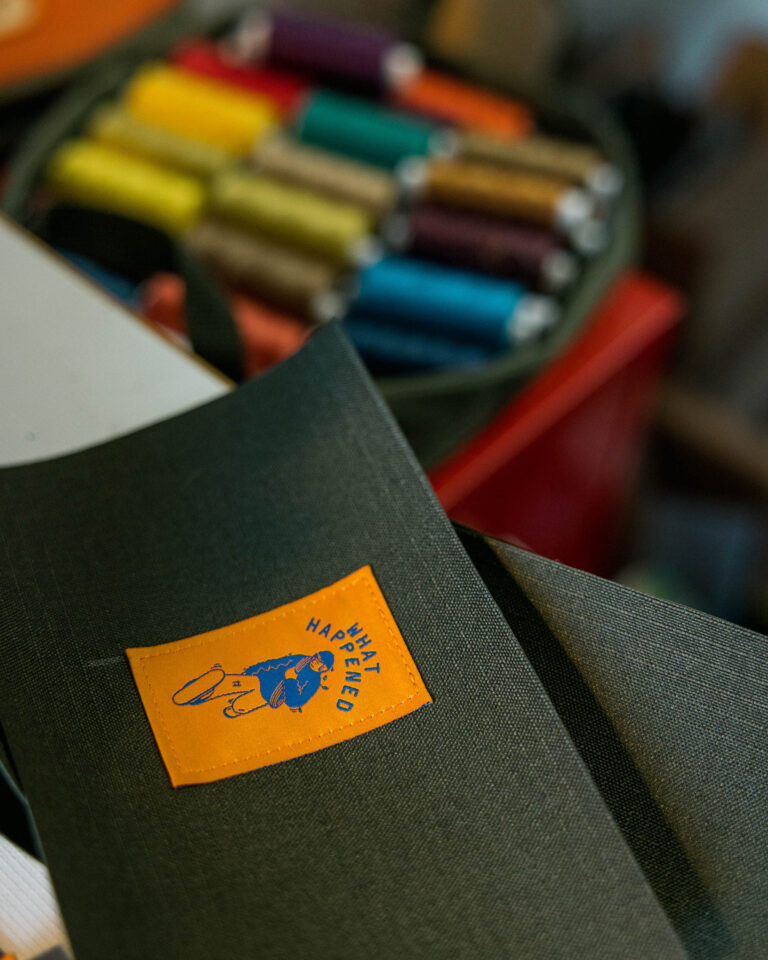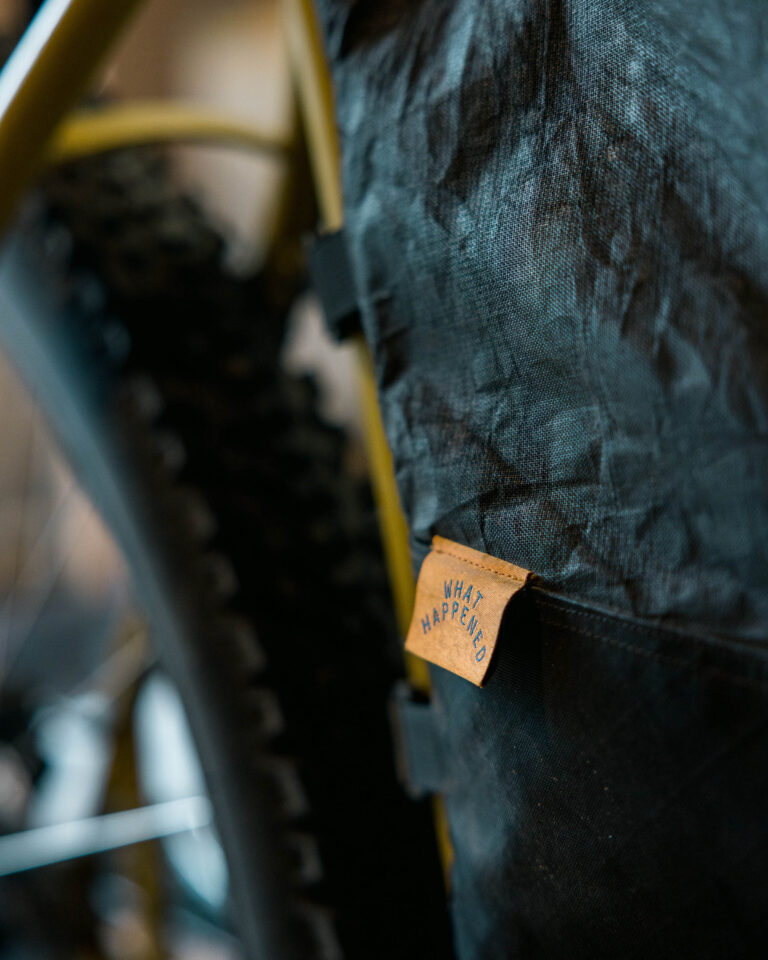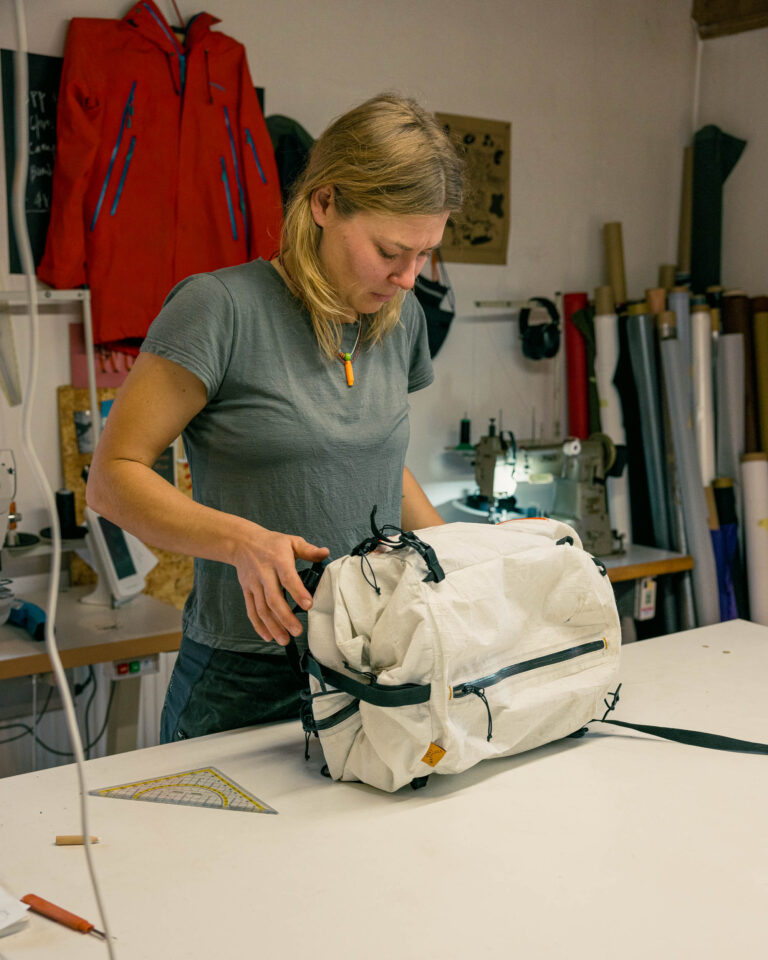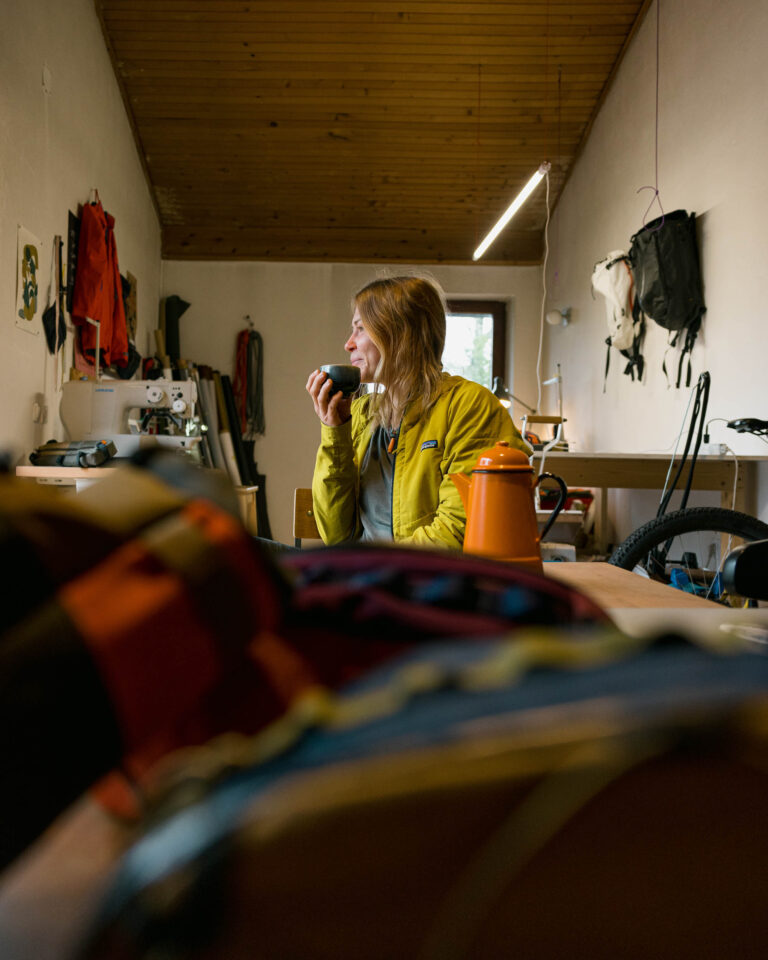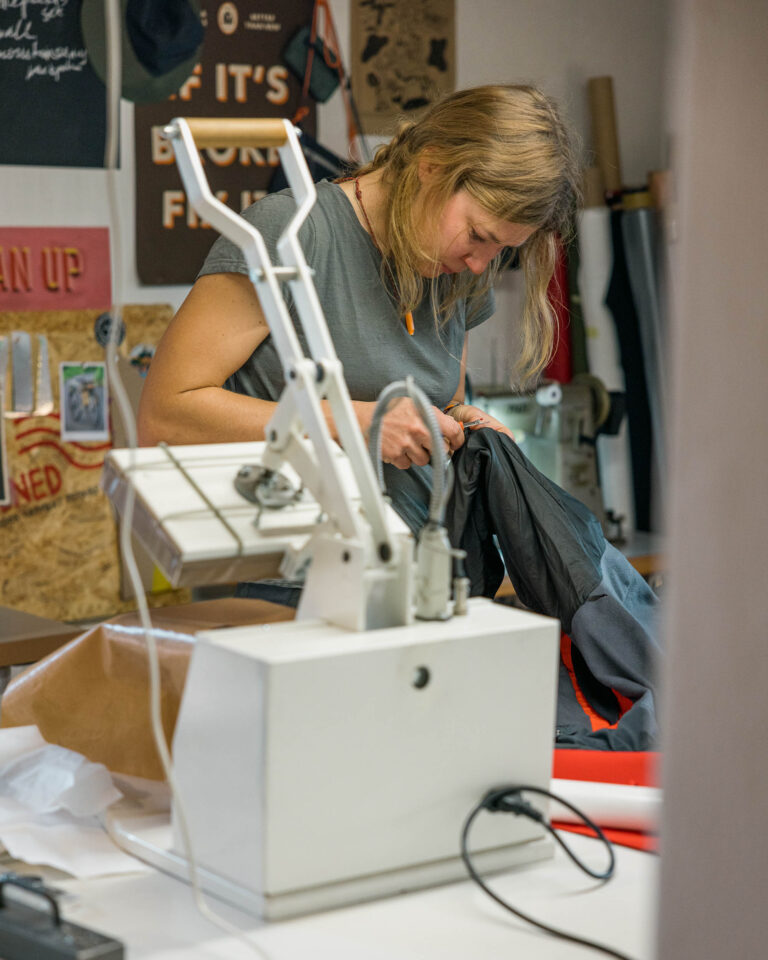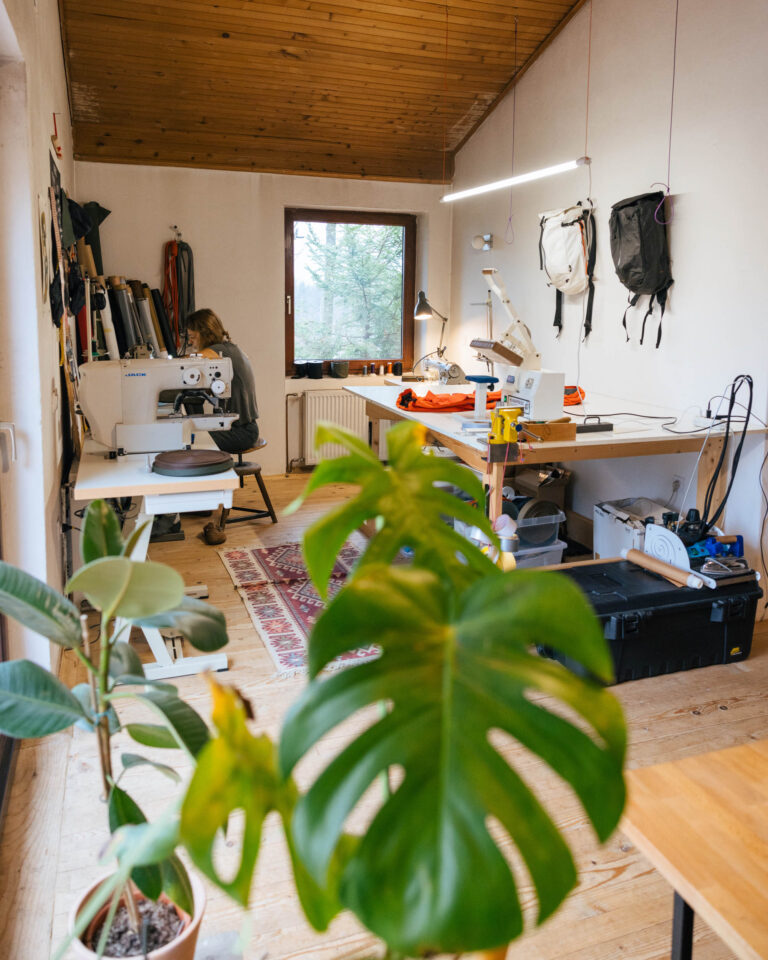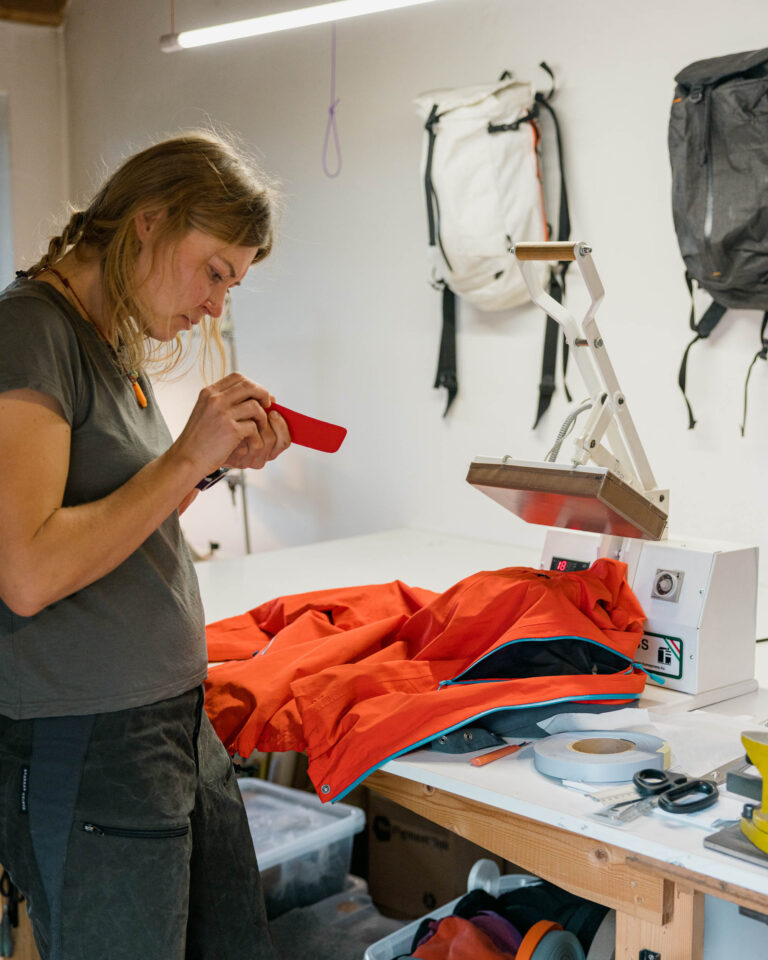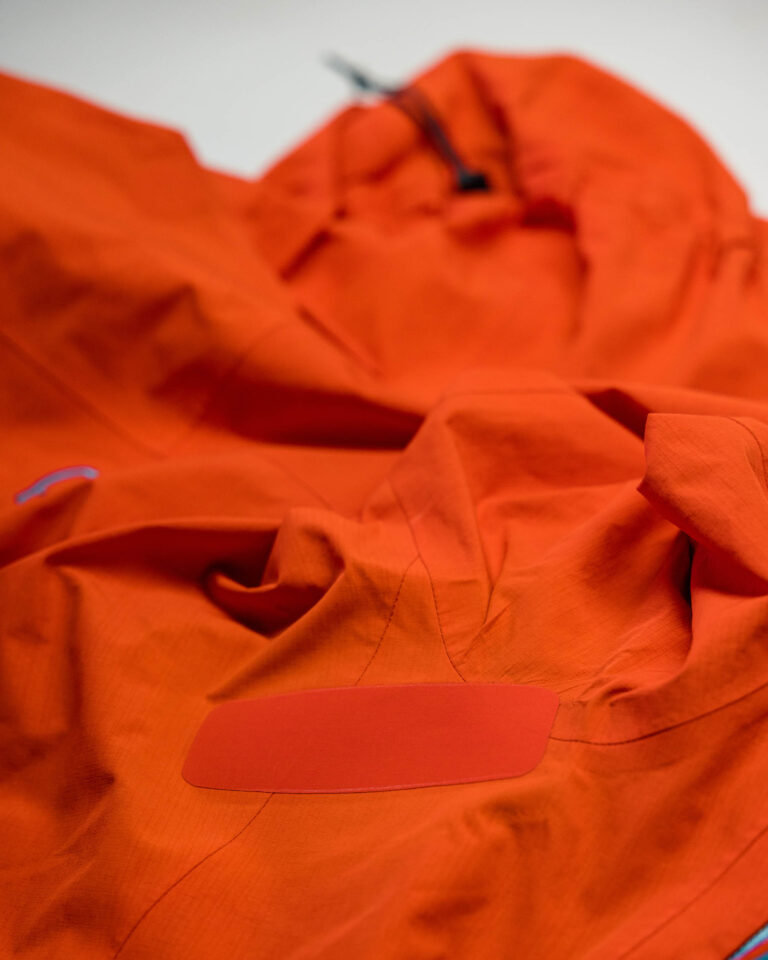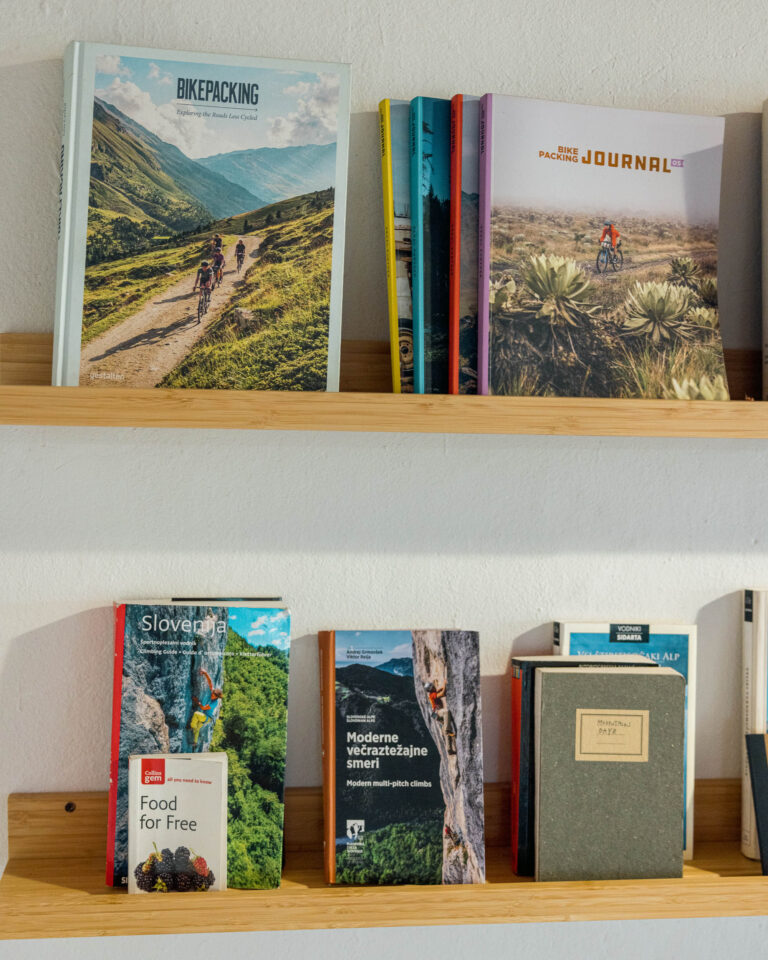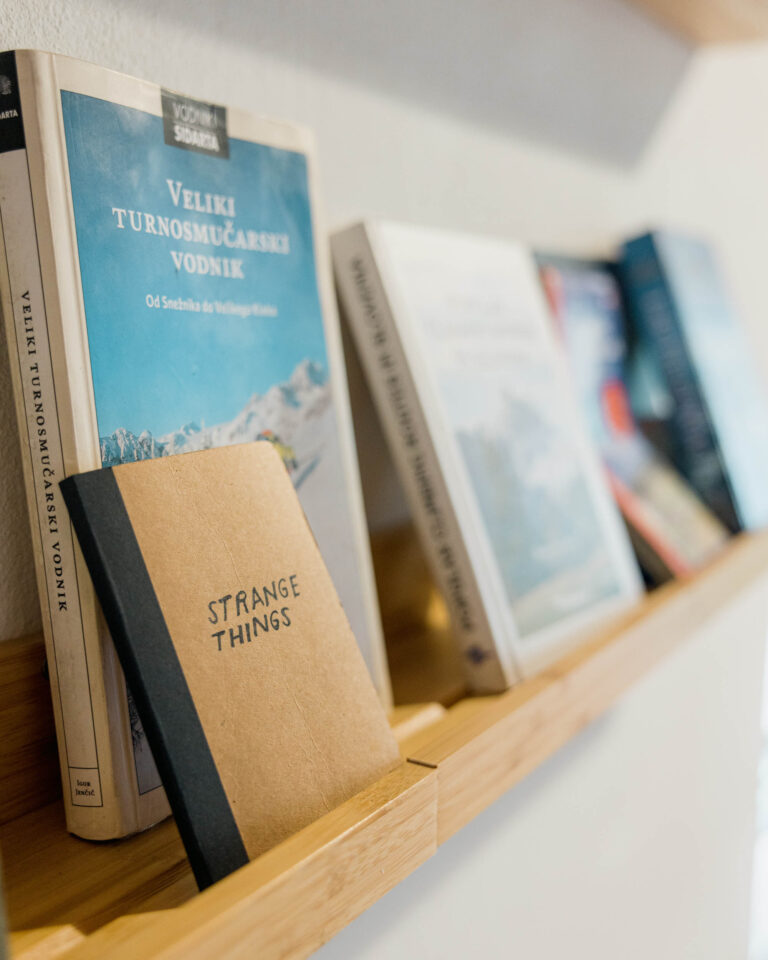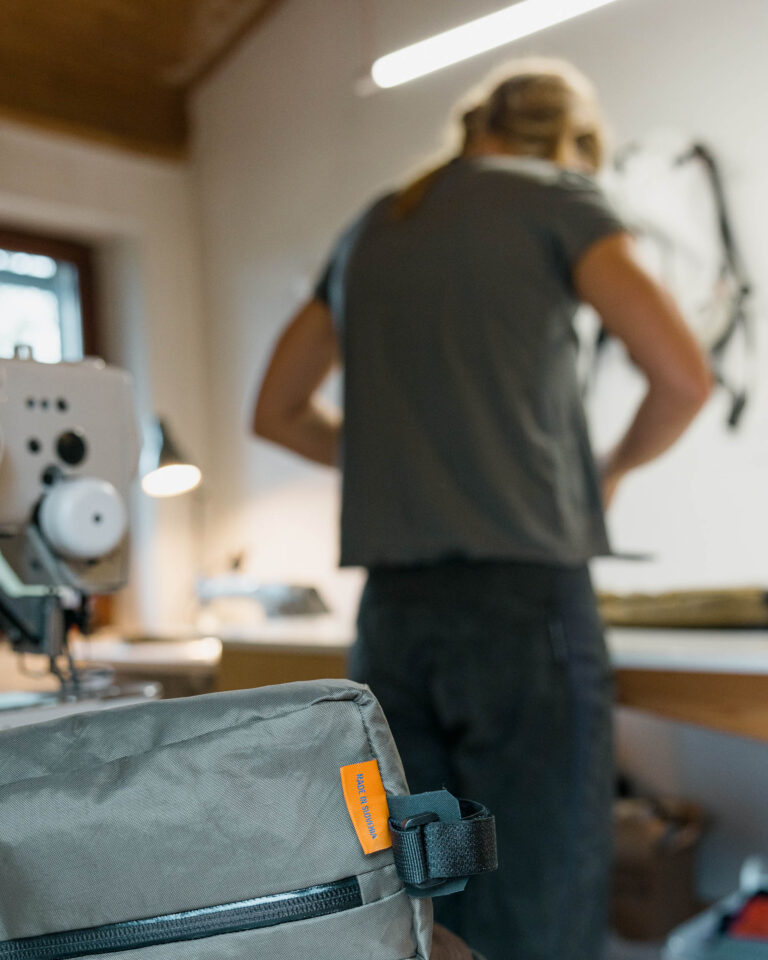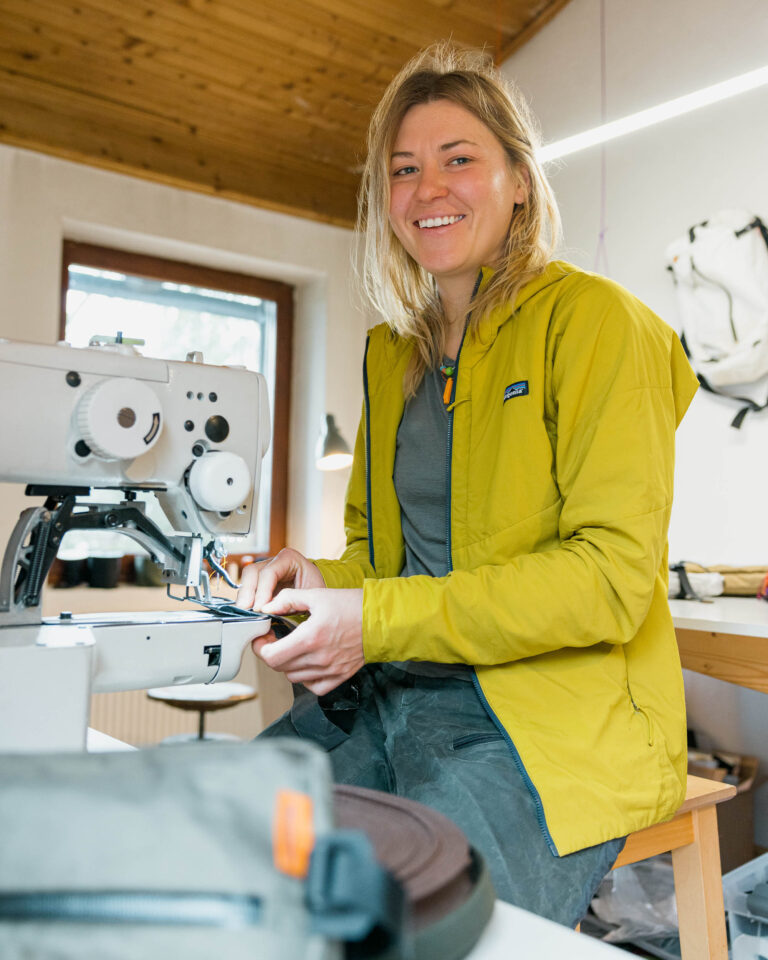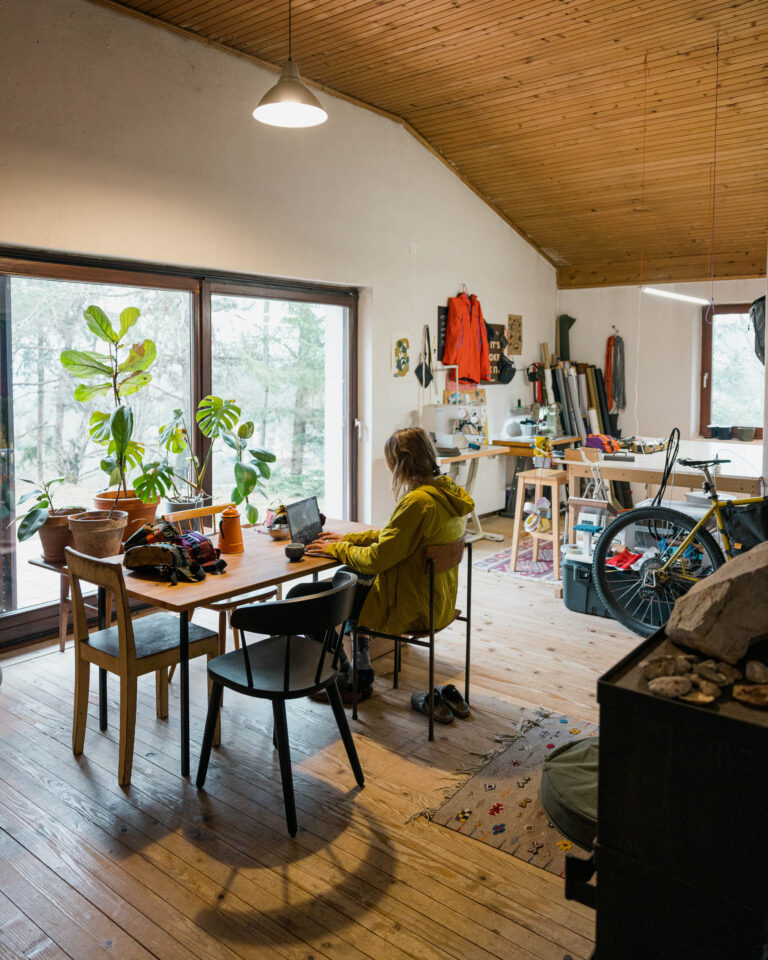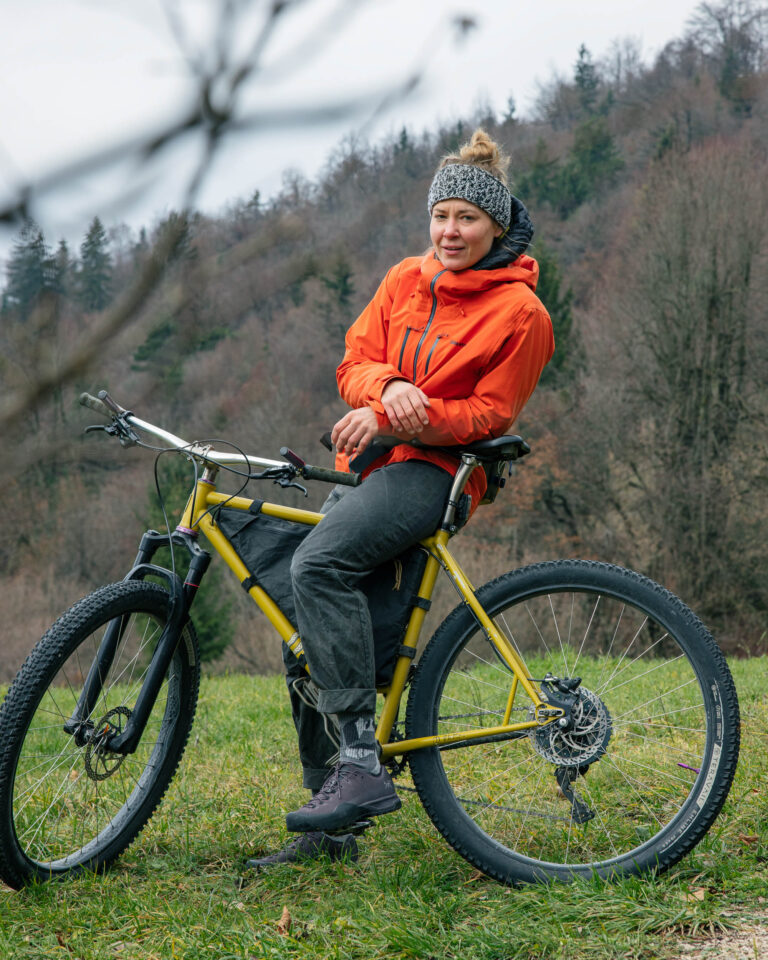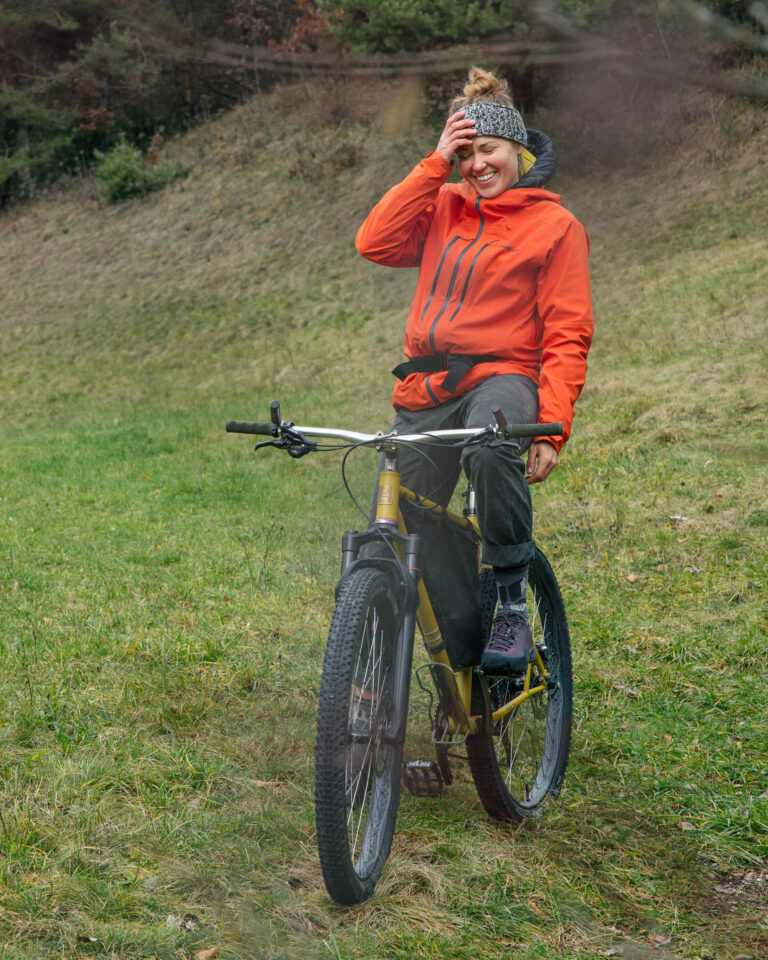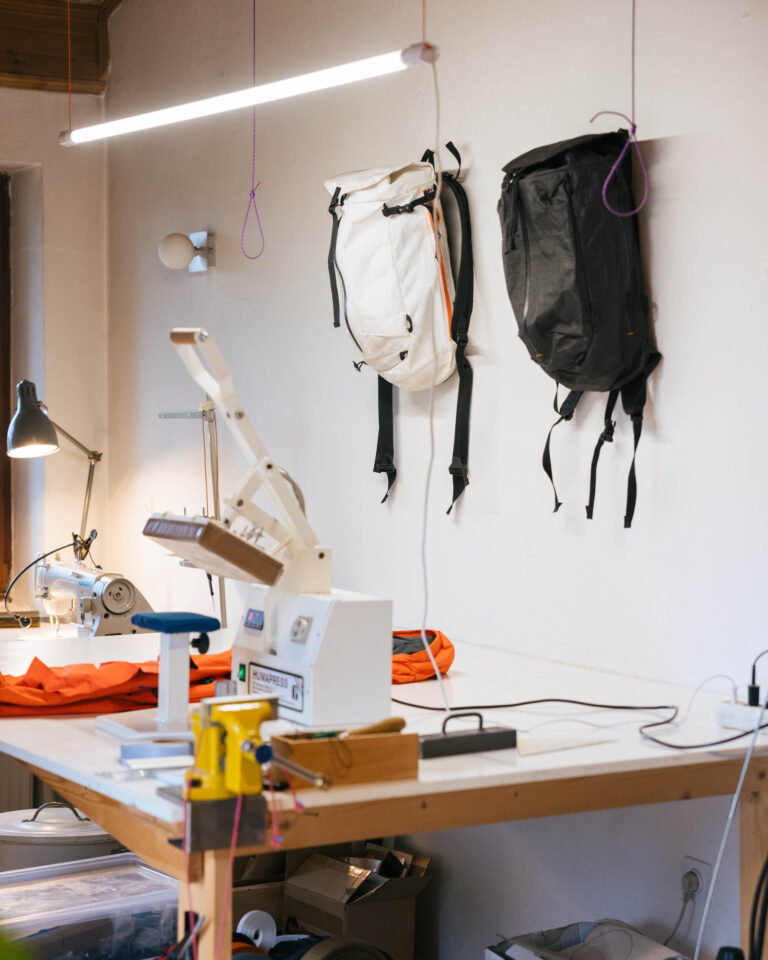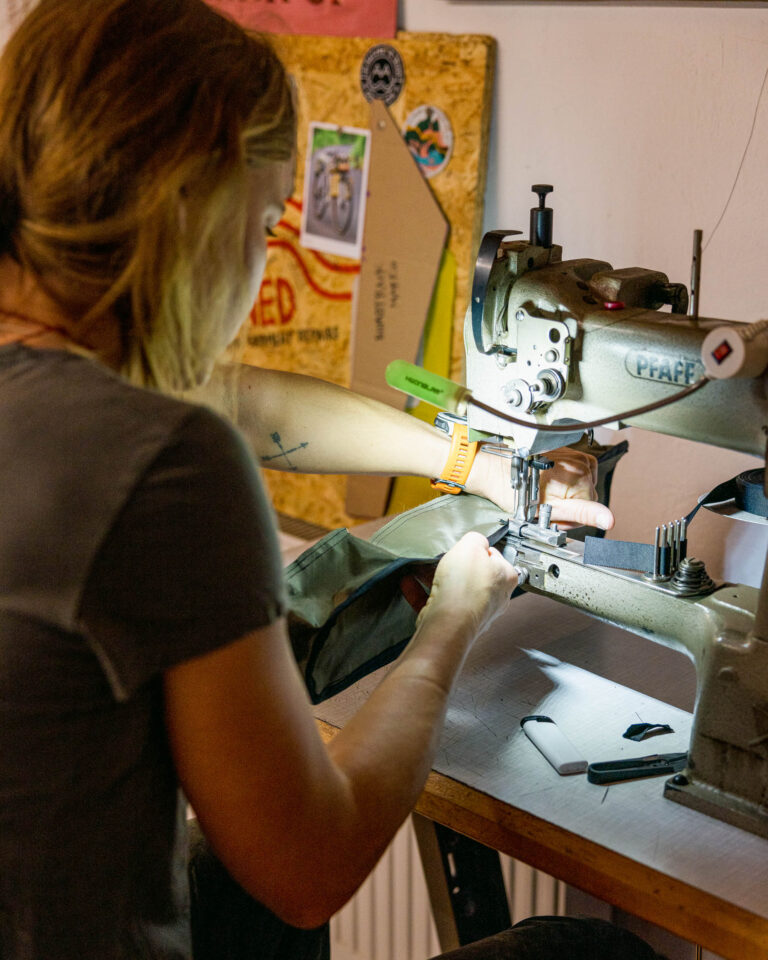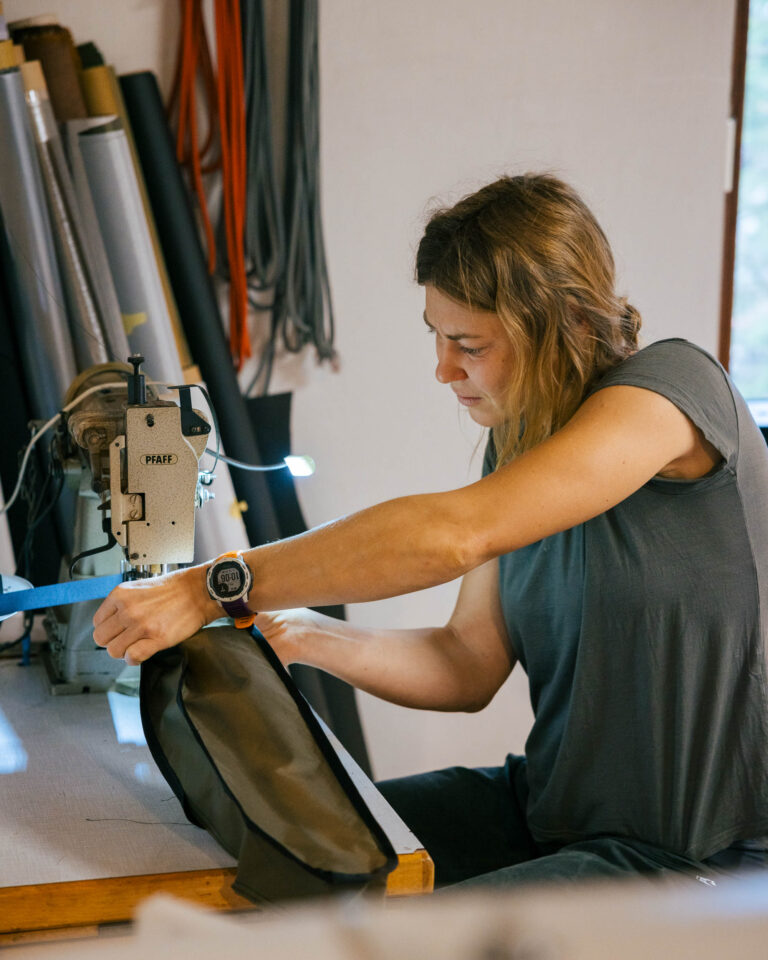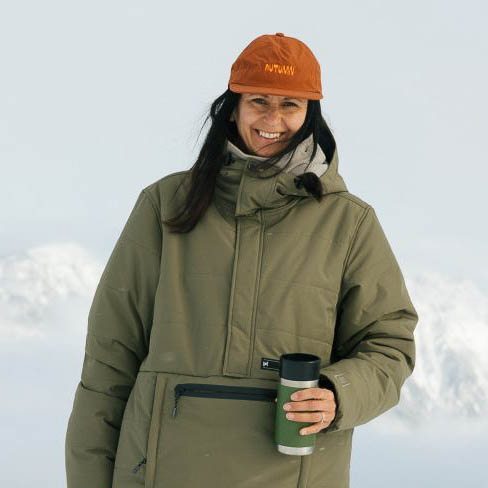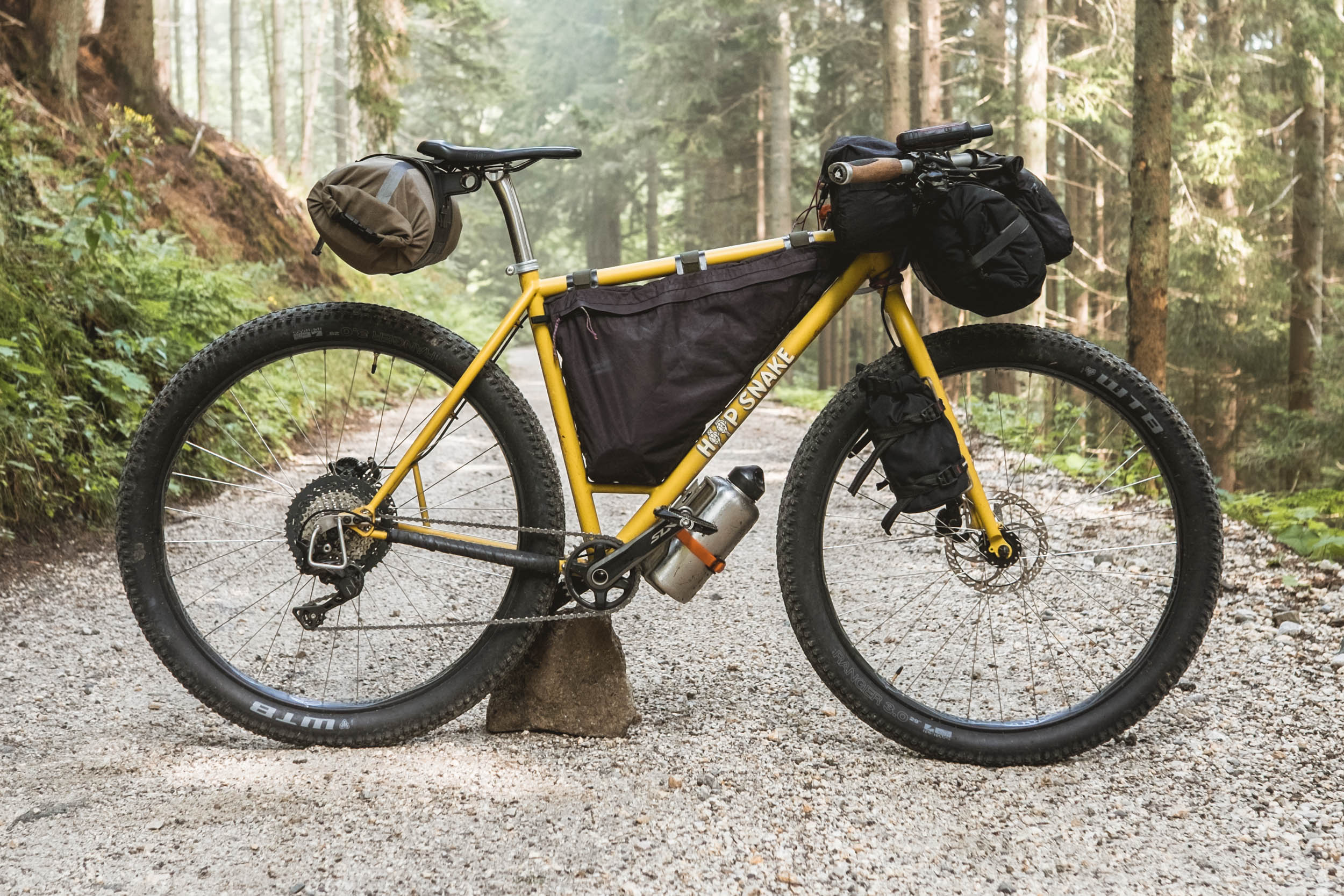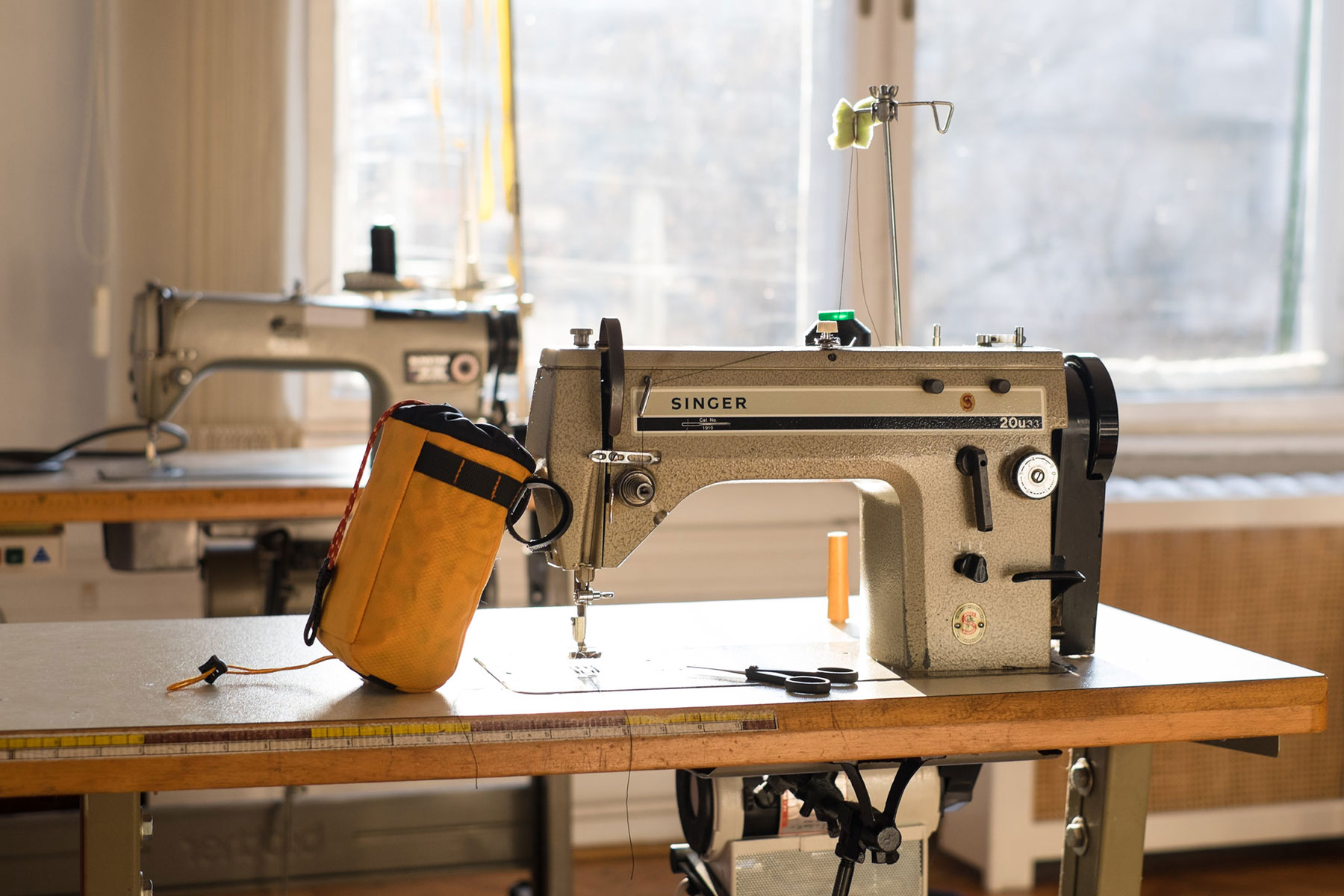Inside What Happened: Made (and Remade) in Slovenia
Share This
What Happened is a one-woman creative design studio based in Slovenia that dreams up some of the most beautiful and colorful bags in the world of bikepacking. Beyond founder Neža Peterca’s thoughtful designs and meticulous construction, her bags also focus on sustainability through upcycling. Photographer Mateja Kordic recently spent a day with Neža in her workshop, and you can find her photo tour and interview here…
Words and photos by Mateja Kordic (@mateja.kordic)
Neža Peterca runs a creative studio for all things outdoors called What Happened. She’s a graphic designer by trade, and she’s also a maker, the founder of Sisters in the Wild, an adventurer, and all-around creative from Slovenia who has contributed regularly to this site over the years. She’s been working as an outdoor gear designer for the past decade and is now designing custom-made gear and working on technical garment repairs under the What Happened name.
Surrounded by nature, her charming creative studio and home on top of a hill in rural Slovenia reflects Neža’s style and love for the outdoors. It’s evident in every little corner of the space. Her incredible attention to detail is visible in everything she makes, too, from her products, events to the way she decorates her space.
I spent spent a lovely morning in the studio with Neža, learning about her work, values, drive, and unmatched passion to create. You can find my interview with her and a gallery of photos from around her space below. When you’ve finished reading, you can take an even deeper dive into Neža’s work by exploring the past posted linked in the related content grid at the bottom of this post.
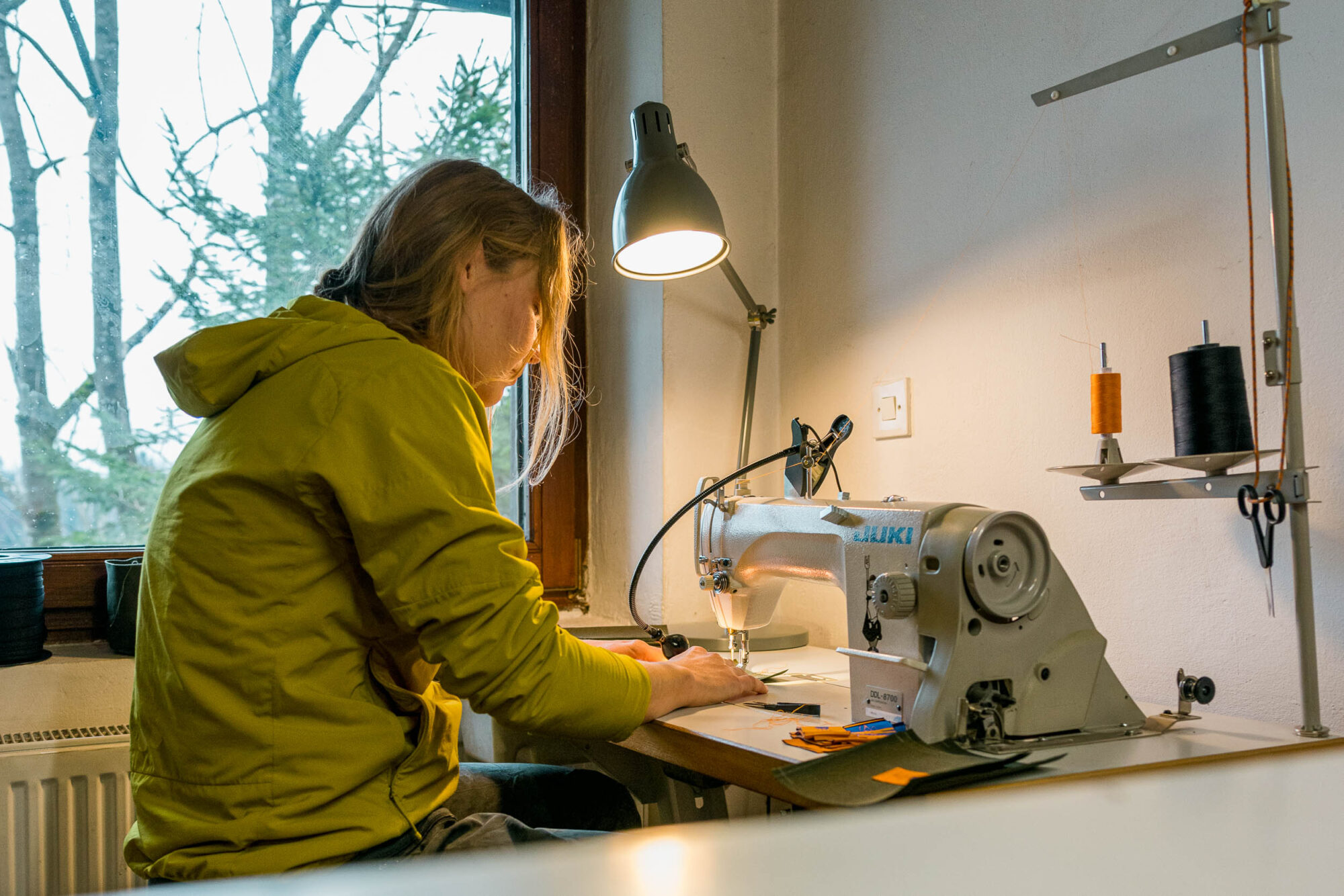
To start, how’d you come up with the name “What Happened” for your brand?
The idea comes from the repairs part of the business. Whenever a customer would bring their garment or a bag to repair, I’d always start a conversation with, “What happened?” I look at the repairs as scars; they tell stories. It’s the philosophy behind the brand; buy a good quality product, take good care of it, and repair it. Not only will it last you a long time but it’ll also hold a great deal of memories!
On that note, can you share a few tips for taking care of your outdoor garments?
First, wash your shell jackets! You’re actually doing it more harm than good by not washing it. The dirt and oils from your skin are clogging the pores of the membrane, which then causes the delamination of the layers and consequently damages the functionality of the jacket. The best formula is to wash it after you’ve used it around 20 times and reapply a DWR treatment when the drops don’t bead on the surface anymore.
Second, be mindful of how you open and close your zippers. Zippers are one of the most difficult parts to be repaired! Don’t force and pull them. Be gentle and keep the sliders close to the zip when opening.
Third, buy good quality gear that’s repairable! It’s better to buy it once than buy something cheap that will wear out quickly.
Can you tell us what first attracted you to making custom bags?
I can’t really pinpoint why I decided to go in the direction of bag design, but I’ve always been interested in industrial design and making tangible objects. I find a challenge in designing a piece that’s multifunctional and practical but at the same time fits a customer and their unique needs in the same way that jacket or any other technical garment would.
I love the look and feel of your products. What inspires your design decisions?
In a culture where most brands are trying to follow the trends, I only tend to make products that I would actually wear. I’ve always had a fairly strong sense of what I like and what I dislike, so it was never a hard choice in terms of which colors of fabric and accessories to use. Little details are very important to me, such as matching the thread to the color of the fabric, using colorful ropes, and picking the names of the products I release. But, I always start building the product on the material, and the details come second.
How do you come up with new product ideas?
Since most of the products are custom made, my customers are really the ones who come up with the ideas. I then take their vision and design it into a functional product. Of course, there are also products that came from my own needs, especially all of the bikepacking bag designs. Through my various trips over the years, I’ve learned what actually works and what doesn’t and which features are functional instead of just aesthetic.
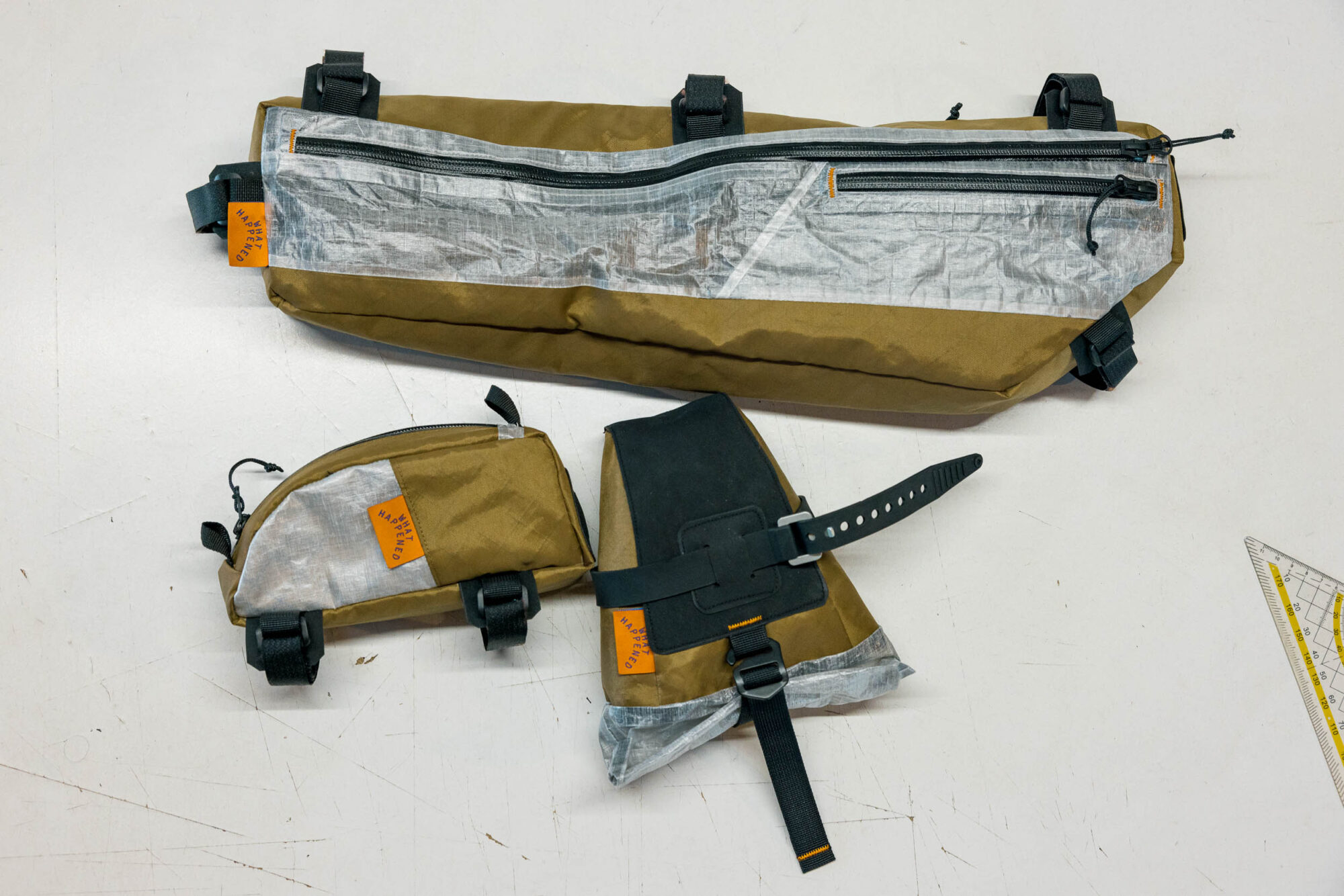
What product would you say you are most proud of?
I think that would have to be the new ultralight backpack. I’ve literally dragged it all over the Alps in the past few months, using it for alpine climbing, bikepacking, mountaineering, and ice climbing. It still looks like new (except a few blood and dirt stains here and there). It’s made from Ultra material which is the fabric that’s impressed me the most lately. Its durability and easy to take care of makes it a perfect fit for What Happened products.
And what’s your most popular bag these days?
Probably the Wabi Sabi handlebar snack bags. Each year, I make two small batches of about 12 bags. They are made from cut-offs and dead stock materials; each of them is unique and has a weird name.
How difficult is the process of upcycling materials from old products, and how important is reusing materials to you?
The goal of upcycling projects was never to sell them but to show consumers and brands what’s possible to create from unwanted garments. Upcycling has a somewhat negative connotation in the past, at least in terms of design, with lots of products looking like something from an arts and crafts market. So, I like to experiment with designing upcycling pieces that look like they could be a part of the brand’s collection. A good example was a saddle bag made out of an old Patagonia duffle bag, which made a lot of people wonder, “When did Patagonia start making bikepacking bags?!”
Are you working on any new products or projects at the moment?
I’m currently working on a very exciting collaborative project with Slovenian designer Marko Sajn, who was recently featured in an edition of Rider’s Lens. The project is a mix of outdoor gear repair and graphic art, and it might (hopefully) make repairs look cool again.
What values are important to you in the way you run your business?
In short, the most important value is that the brand keeps the responsibility for the products once they’re sold to the consumer. That’s to say, What Happened offers support to the customer by repairing it and giving products a second life once they’ve served their time.
What is the biggest challenge you are currently facing as a brand?
Believe it or not, it’s how to stay small. It’s very easy to get pulled into growing your business, but I’ve been down that path, and it’s not how I want to do things at the moment. Keeping it small enables me to have more time to test products and design solutions that I can later apply to custom orders. It also makes it possible for me to do other things, such as creating bikepacking events and going on bikepacking trips, and of recent, training to become a mountain rescuer, which all directly feed back to the inspirational flow for the brand.
Who are your customers? Where do they mostly come from?
My customers are people who are concerned about their ecological footprint. They care about where their product is made, who made it, and what it’s made from. Geographically, most of them are Europeans from the Alps region.
Tell us about how first you got into riding and how bikes have become part of your life since then.
The bicycle has been a constant in my life for the past 20 years, and I can say it has shaped the life I live now. It started with road cycling and continued with fixed gear riding, which led me to move to Budapest, where I co-founded an urban cycling backpack brand called Blind Chic. A few years later, I got into bikepacking, which helped me get over many of my fears and reminded me of how much I love the mountains. It also subsequently triggered moving back to Slovenia, starting an outdoor brand, and applying for the mountain rescue team.
What bikes are you currently riding?
A custom-made Hoop Snake made by No Public Issue (which is linked below) and the newest addition to the family, a Ghost Lector FS Pro.
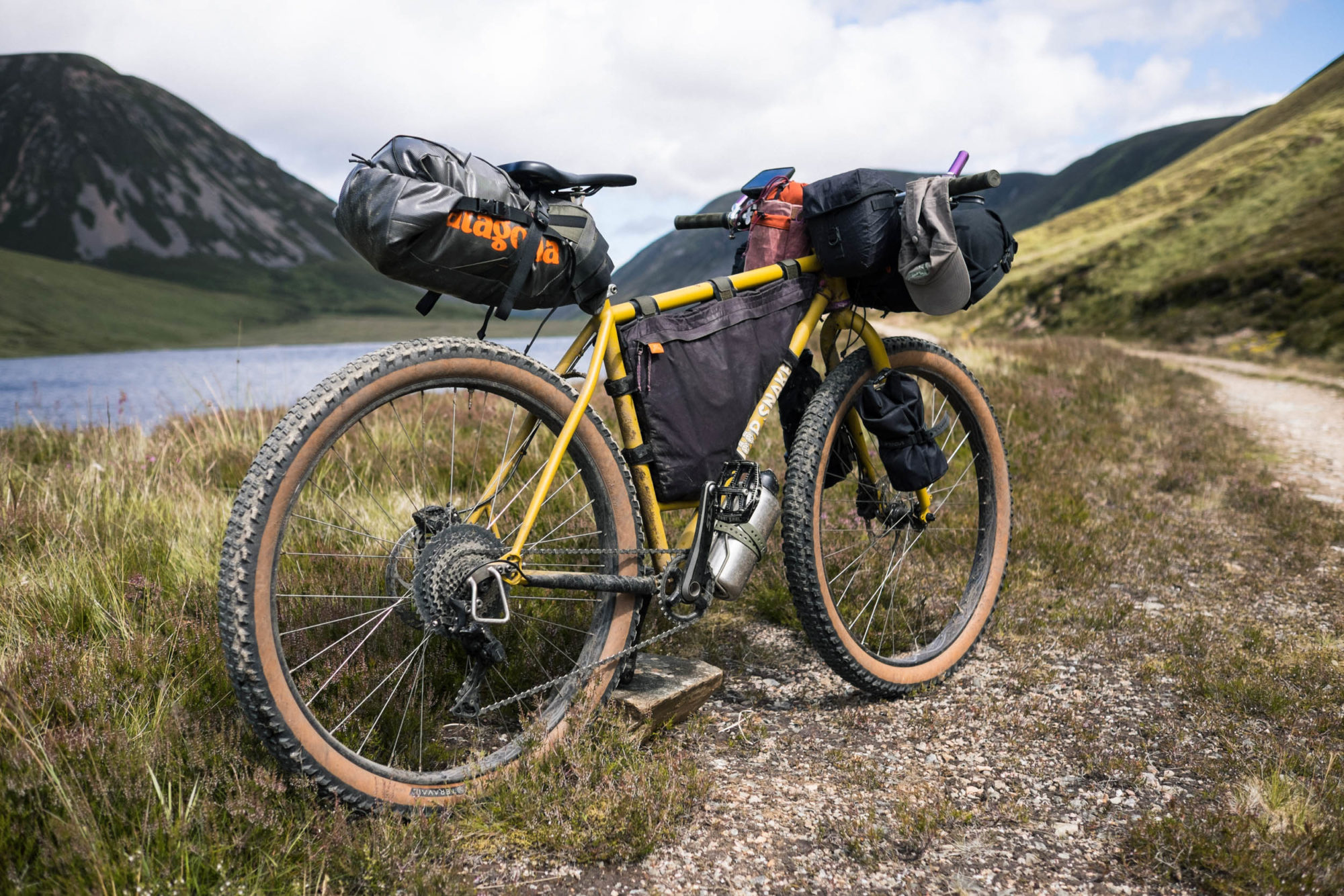
What’s your dream bike trip?
I was really inspired by Ueli Steck’s project in 2015, when he climbed all 82 of the 4,000-meter peaks in the Alps, using a bicycle to travel between them. I don’t think I am quite there yet with my mountaineering skills, but I hope one day I can make this bikepacking/mountaineering trip come true!
Lastly, you’re constantly trying to inspire more women to get out and explore the world around them more independently. What’s your message to them?
Don’t let other people tell you what you can or can’t do. You’re stronger than you think, and nothing is impossible!
Related Content
Make sure to dig into these related articles for more info...
Please keep the conversation civil, constructive, and inclusive, or your comment will be removed.






